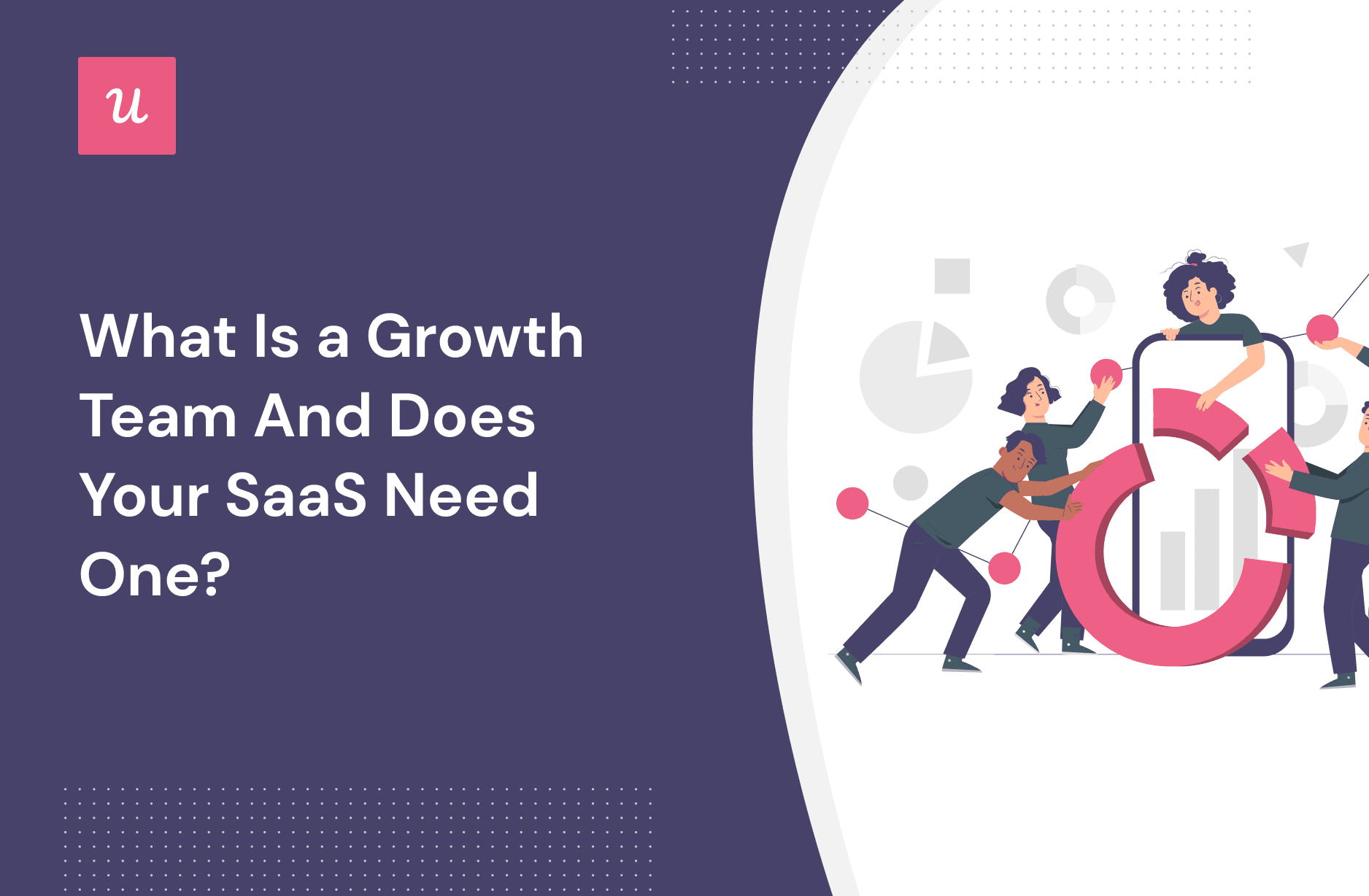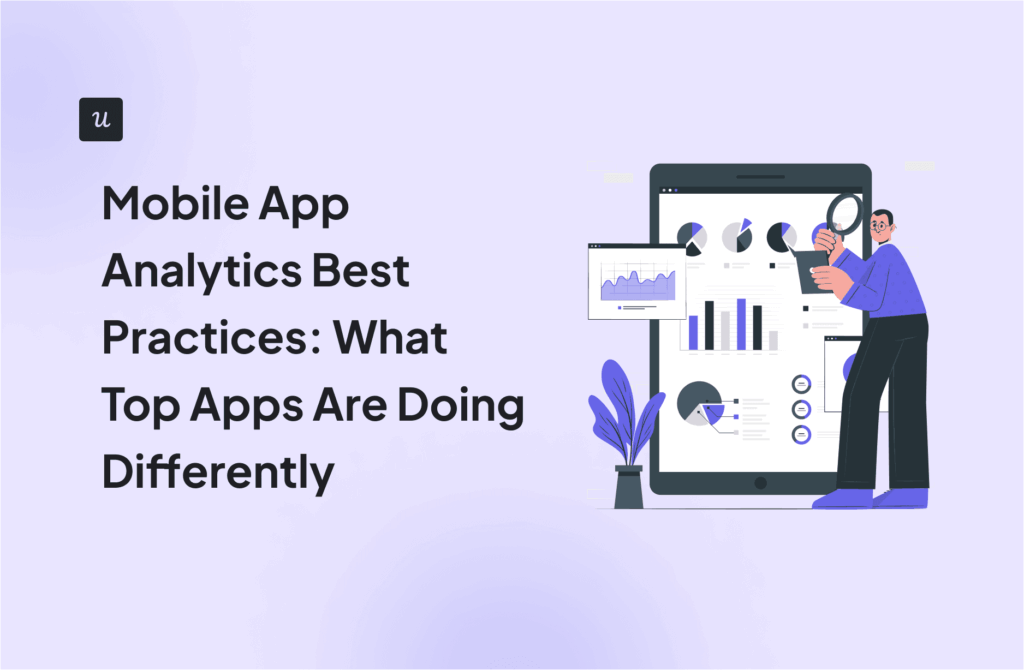
Thinking about building a growth team? This article provides the guide you need. As you read on, you’ll learn:
- The key responsibilities of SaaS growth teams.
- The main steps involved in the growth process.
- Different roles on the growth team and their functions — as well as which roles to prioritize if you’re not ready to go all in.
- Examples of in-app experiments to drive growth.
Get The Insights!
The fastest way to learn about Product Growth, Management & Trends.
What is a growth team?
A growth team is a cross-functional team that identifies and executes growth opportunities through data and experimentation.
The typical growth team pulls experts from the marketing, product, and sales team. Together, they tackle growth challenges and work on optimizing the entire customer journey.
Main responsibilities of growth teams
The primary responsibility of growth teams is to perform experiments and find ways to enhance the user experience. The specifics depend on the company and how diverse the team is, but here are some responsibilities to expect from any growth team:
- User onboarding optimization: Growth teams ensure the onboarding process is smooth and intuitive. They spot and reduce friction for new users and help them quickly experience the product’s value.
- User engagement: Growth teams drive engagement among new and existing users through gamification and data-driven personalization.
- Conversion rate optimization (CRO): This team conducts experiments and A/B tests and then finds ways to increase conversion rates at different stages of the user journey.
- User education: from SEO content to in-app guides and webinars, growth teams create content to increase brand awareness, acquire users, and help existing customers maximize the value they get from the product.
- Data analysis: In some companies, growth teams are responsible for collecting and analyzing user data to identify trends, pain points, and opportunities for improvement. They use this data to guide product development and marketing efforts.
The main steps of the growth process
The growth process can be summarized in four steps:
- Collect and analyze data.
- Draw a hypothesis based on the data.
- Design growth experiments using insights from your hypothesis.
- Analyze your results and improve.

Let’s go over each of these steps and how to implement them.
Collect and analyze data
The first step in the growth process is to collect and analyze data to identify improvement areas.
How?
Dig into your product analytics and see how users are interacting with your tool. Use funnel analysis to identify drop-offs and note possible improvements you can make to optimize conversions.

Userpilot’s Trends allows you to dig deeper into your user behavior over time. With this information, your growth team can easily identify patterns and reach insightful conclusions.

Another way to collect customer data is through in-app surveys. Trigger CES, NPS, and CSAT surveys at different points in the user journey and analyze the survey responses.

Generate hypothesis
Set different product improvement goals based on the insights you generate above. For example, you might have noticed users drop off too much during onboarding.
Based on that, one of your goals will be to optimize the user onboarding process. You might come up with the following hypotheses:
- Users abandon onboarding because it’s time-consuming and the instructions are unclear.
- Breaking down the onboarding process into smaller, more manageable steps filled with gamification will improve engagement.
As you develop hypotheses, keep your business North Star in mind — this helps you determine what should be tested and what you’re better off ignoring.

Design and launch growth experiments
With your hypotheses in hand, design experiments to test these ideas. Your experiments can take various forms, including A/B tests or multivariate tests, depending on what you’re testing.
Carefully plan and execute your experiments to just a subset of users. This allows you to easily measure the impact of the proposed changes in a controlled environment.
While doing this, avoid A/B testing mistakes like running too many hypotheses at a time. Also, be patient and have the tests run their course before reaching conclusions. Hasty conclusions might skew your results.

Analyze growth experiments to improve
After running your experiments, collect data on the results and determine whether the changes had the desired impact. Did they lead to increased user engagement, higher conversion rates, or improved retention?

You can’t analyze this data manually; access to the right tool is paramount.
This is where Userpilot can help. You’ll be able to create experiments, and once the experiment is over, you can examine the results at a glance and generate valuable insights.

Based on the outcomes, iterate and make data-informed decisions. If an experiment is successful, implement the changes across the entire user base. If not, return to the drawing board and refine your hypotheses for future experiments.
Why create a growth team?
You already know what growth teams do and the main process they follow. But why bother creating a dedicated team when your PM or PMM can handle growth?
Here are two reasons:
Scale your growth initiative
Things move faster and in the right direction when you build a growth team that’s only focused on growth.
The results a dedicated team will achieve in a short while supersedes what your PM alone can pull off. Or even what your cross-functional teams can achieve with their attention divided between growth and other activities.
Avoid the product death cycle
Here’s a story most SaaS companies can relate to: customers request certain features, or you add them of your own volition. You experience an initial spike in usage and product growth as a result.
Then everything declines months down the line. Growth flattens, and it looks like you’re back to square one. This is known as the product death cycle.
Product death is normal to some extent, but it becomes a problem when too many users stop using your tool after a while — this is where a dedicated team comes in.
Growth teams work on identifying features users actually want. Once developed, they also create in-app strategies to drive new feature discovery and adoption. These activities lead to exponential growth and retention compared to launching features and thinking your job ends there.

Growth team model: Roles inside of growth marketing teams
The number of people and roles in a growth team will depend on your company’s size and needs.
For example, not all teams will have a dedicated data analyst. The growth marketer — also the head of the team — could take that role in a small startup.
Similarly, the growth team could collaborate with internal product and UX teams instead of having dedicated people. But of course, if you have the budget and your company needs it, you should develop a fully-fledged growth team. Otherwise, start small and expand as you go.
The key people to have:
Growth PM
The growth PM or product manager is responsible for defining the overall growth strategy and experiment roadmap.
They motivate the team and ensure everyone meets up with goals and KPIs. Additionally, growth PMs are the point of contact when collaborating with teams from other departments.
This is what Sinduja Ramanujam, the Senior Product Manager at Microsoft, thinks about the role:
“The role of a Growth PM is very unique because you’re thinking about multiple things at the same time. You’re thinking about your users, about your back end, about your front end, and you want to grow your business.”

If you’re a large organization and have more than a single growth team, you could have a Chief Growth Officer.
This is a C-level executive responsible for overseeing and coordinating all activities that concern your company’s growth. The growth PM will report to this person.
Growth marketer
The growth marketer specializes in creating and executing marketing strategies.
They use various channels, including PPC, email marketing, content marketing, and SEO, to attract and engage users.
In-app, the growth marketer implements and tracks the performance of experiments.
Growth data analysts
The growth data analyst is responsible for collecting, analyzing, and reporting on data to help the growth team make informed decisions.
By parsing through data, the analyst is able to spot trends, anomalies, and patterns that will guide product development and future experiments.
Growth engineer
The growth engineer is a software developer or engineer who focuses on implementing technical solutions to support growth initiatives.
They work on features, experiments, and optimizations that improve user experiences and drive desired outcomes. In some cases, the growth engineer lays the groundwork for gathering and interpreting data — particularly when the team doesn’t use no-code solutions.
Growth (UX) designer
The growth UX designer creates experiences that encourage users to take desired actions, such as signing up for a free trial or engaging with a new feature. They use data and user research to understand user needs and motivations and design effective and enjoyable experiences.
The primary objective of the growth designer is to make the product more user-friendly and engaging.
Growth hacker vs. growth marketer
“Growth hacker” was coined by Sean Ellis and made popular in his 2017 book — Growth Hacking: The Definitive Guide to Growth for Startups.
In most cases, a growth hacker’s main responsibility is focused on applying hacks that lead to growth due to virality. A common example of this is creating a referral viral loop that encourages existing users to invite others in exchange for valuable rewards. The new users will also do the same, creating a loop that rapidly increases the user base.
On the other hand, a growth marketer is a marketer at its core.
They adopt a more traditional marketing approach but with a strong focus on data-driven decision-making and optimization.
The growth marketer is focused on improving conversion rates at one specific part of the funnel at a time — usually, adoption and expansion that leads to more MRR.
Growth team vs. marketing team
The main difference is in their focus and objectives. Marketing teams pay more attention to acquisition and conversion.
On the other hand, growth teams make experiments across the entire user journey, always looking for ways to optimize every stage of the customer lifecycle.
Examples of growth experiments in SaaS
Growth teams occasionally conduct small tests where they experiment with CTA replacements, color variations, form lengths, etc., However, there are major in-product experiments to try — and in many cases, these are the needle movers.
Here are two examples of in-product growth experiments:
Adding an onboarding checklist to improve the activation rate
Users who reach the activation stage are more likely to convert to paid customers. So, you want to ensure your flows are optimized to increase activation rates.
One way to achieve this is A/B testing checklists in your onboarding flow.

Trigger an onboarding checklist for a section of your users and allow the rest to onboard without a checklist, then analyze the results to see if there’s a difference in activation rates.
Video tutorials vs. step-by-step guides for increasing new feature adoption
Users respond to different prompts. So, test if your customers relate better with short in-app videos that explain new features and prompt adoption or if they prefer step-by-step guides using tooltips.
This will be a head-to-head A/B test. Show group A one flow with videos, too, and use step-by-step guides with text only for group B. Analyze the results and see what performs better.

Conclusion
Growth teams thrive on speed, resilience, and flexibility.
They won’t always have the answer, but through experimentation, they can create the right environment for users to thrive, leading to increased engagement and retention.
Whether you have a full growth team or it’s just your PM for now, Userpilot can speed up your growth process. Get a demo now and see how our platform lets you track user behavior data, trigger and analyze in-app feedback, and conduct A/B tests.







